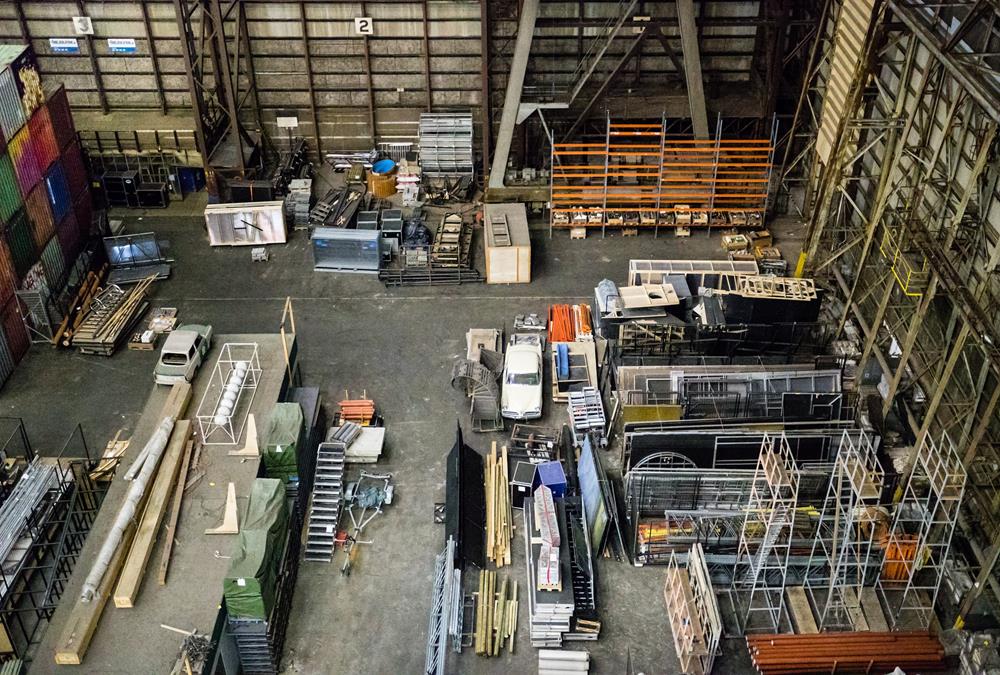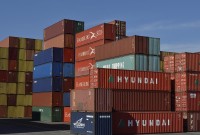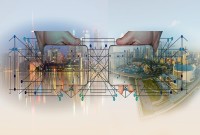- Home
- Business Processes
- Industry Knowledge
- Aerospace Industry
- Automotive Industry
- Banking Domain
- BFSI Industry
- Consumer/ FMCG Industry
- Chemicals Industry
- Engineering & Construction
- Energy Industry
- Education Domain
- Finance Domain
- Hospitality Domain
- Healthcare Industry
- Insurance Domain
- Retail Industry
- Travel and Tourism Domain
- Telecom Industry
- Leadership Skills
- eLearning
- Home
- Functional
- Order to Cash
- Warehouse Layouts
Warehouse Layouts
One of the most important decisions when running a warehouse is its layout. Warehouse layout defines the physical arrangement of storage racks, loading and unloading areas, equipment and other facility areas in the warehouse. A good layout aligned with the business needs could have a significant effect on the efficiency.
One of the most important decisions when running a warehouse is its layout. Warehouse layout defines the physical arrangement of storage racks, loading and unloading areas, equipment and other facility areas in the warehouse. A good layout aligned with the business needs could have a significant effect on the efficiency of operations. Today’s business climate is competitive, which is why it is so important for business owners to make their warehouse planning and implementation as efficient as possible to drive growth and profits. Layout decisions are important as they require substantial investments of both money and effort. Layouts are long term commitments that have significant impact on the cost and efficiency of short-term operations .
Compliance regulations regarding layout is also a major parameter as it controls the effective utilization and operational efficiency of the storage facility. Based on the requirements, locations are kept away or near the demand centers.
Objectives to keep in mind while designing your warehouse layouts:
- Optimum utilization and accessibility of storage space
- Maximize available storage and adjust for future growth
- Achieve business objectives at minimum operating expenses
Before you start the design of the warehouse layout, look at your stock and inventory needs. You should plan and define your warehouse layout to meet changing needs including predicting the amount of stock you will need, as well as where you would like to store your inventory. Your warehouse layout should encompass all the different factors that create an ideal warehouse or distribution center, so that you can achieve optimal warehouse efficiency.
Factors for Warehouse Layout Design
Given below are some important points to consider while defining the layout for your warehouse:
- Layout should consider the physical requirements of your warehouse as well as the tasks, milestones, staffing, estimated hours, budget, and deadline.
- Consider how items will be stored and picked
- Establish high-priority and low-priority storages areas for optimum placement of goods.
- Divide your warehouse into zones to accommodate various storage needs, such as temperature requirements, or various turnover rates for items.
- Organize your items either based on material handling and storage traits, or by SKU and product description.
- Group locations by using physical capacity constraint settings.
- Estimate your inventory needs and consider the seasonality and demand of products
- Specify warehouse locations based on business needs (for example, site, warehouse, aisle, rack, shelf, or bin position).
Related Links
You May Also Like
-
In the normal course of business, customers are likely to return orders from time to time due to various reasons and business should design processes the manage and accept such returns. A well designed returns management process can reduce costs and issues associated with returns or exchanges.
-
When a customer wants a product that has been stored in the warehouse, the same need to be picked off the shelf (or off the floor) and get it ready for shipping. Depending on how big is the warehouse, picking can take a while. (Many distribution centers cover more than 1 million square feet.). Hence, warehouse order picking methods are an important aspect within any warehouse.
-
Miscellaneous Warehouse Processes
At the end of each inventory control, the Contractor provides the Ordering Person with an inventory report which contains a list of all stock adjustments. The Ordering Person uses the report to create, by use of his/her own means, necessary value and accounting adjustments related to the stock. Let us look at some to the mislaneous warehouse processes not covered earlier.
-
When products arrive at a facility, there need to be a defined process to let them in. The process for accepting inventory when it arrives is called "Receiving". Any warehousing operation must be able to receive inventory or freight from trucks at loading docks and then stow them away in a storage location. Receiving often involves scheduling appointments for deliveries to occur, along with unloading the goods and performing a quality inspection.
-
Inventory is money, and hence businesses need to perform physical inventory counts periodically to make sure that their inventory records are accurate. The traditional approach to conducting inventory counts is to shut down a facility during a slow time of year to count everything, one item at a time. This process is slow, expensive, and (unfortunately) not very accurate.
-
After products have been received and passed a quality inspection, they need to be stored so that you can find them when you need them. This process is called putaway. The spot where you store a particular product is called a location. One section of a warehouse might have small locations for light items; another area may have large locations on the floor for heavy items.
-
Types of Order Picking Methods in the Warehouse
There are many different types of picking in a warehouse and each one works as a customized solution for each business. Depending on the size of your warehouse and inventory, the manpower you have on hand, and the number of customer orders made each day, there may be certain methods that are more efficient for you than others.
-
Transport operations are often divided into full load and part load and due to economies of scale, the unit costs are higher for part loads. Our customer needs several part loads delivering, so it can reduce costs by consolidating these into full loads. Then it gets all the part loads delivered to a warehouse near the suppliers, consolidates them into full loads, and pays the lower costs of full-load transport to its operations.
-
Warehouses may seem like a simple, straightforward concept, but they actually include a variety of different types of warehouses that all have their own niche. The type of warehousing that’s right for you depends on your specific industry, location, and needs. From private warehousing, distribution centers, and climate-controlled warehouses, there’s an option to suit every business.
-
Types of Inventory Count Processes
While dealing with lots of inventory in a warehouse, lots of things can go wrong. Shipments may not have the right number of units in them, or they could get damaged somewhere along the supply chain. Discrepancies in the stock may arise as part of every inventory control, and need to be corrected immediately after the inventory control procedure has been finished.
Explore Our Free Training Articles or
Sign Up to Start With Our eLearning Courses

About Us
Learning
© 2023 TechnoFunc, All Rights Reserved











